 Last additions Last additions |
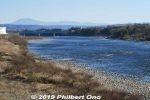
Kiso River with Ota Bridge where travelers crossed the river in the old days on the Nakasendo Road. 太田の渡し場太田橋Apr 17, 2020
|
|

Ota-juku Honjin layout. The original Honjin was a large Japanese-style mansion with many rooms. It was in the center of Ota-juku and operated by the Fukuda family whose head also served as the Ota-juku headman.In the Meiji Period, the Honjin was used as the Ota Town Hall.Apr 17, 2020
|
|
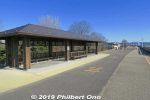
Kiso Riverside rest house. Great for a walk or cycling.Apr 17, 2020
|
|
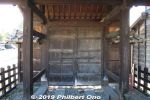
Ota-juku Honjin Gate rear view. 太田宿本陣門Apr 17, 2020
|
|
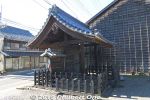
Ota-juku Honjin Gate. In Oct. 2002, the gate was diassembled and repaired before being reassembled. 太田宿本陣門Apr 17, 2020
|
|
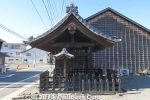
Ota-juku Honjin Gate side view. This is not the original location of this gate. It was moved here during the 1920s or 30s. The Honjin was originally near the still existing Waki-Honjin. 太田宿本陣門Apr 17, 2020
|
|
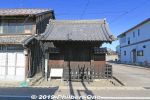
Ota-juku Honjin Gate front view. Too bad the Honjin is gone. Ota-juku's Honjin was rebuilt anew to lodge Princess Kazunomiya when she was to travel from Kyoto to Tokyo to marry Shogun Tokugawa Iemochi in 1861. 太田宿本陣門Apr 17, 2020
|
|

Larger map of Ota-juku.Apr 17, 2020
|
|
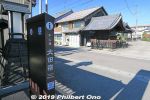
Across from Ota-juku Nakasendo Museum is the original front gate for the Ota-juku Honjin. The Honjin was the lodging town's centerpiece where VIPs like daimyo lords and Imperial family members would stay when passing through.Apr 17, 2020
|
|
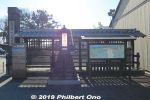
Entrance to Ota-juku Nakasendo Museum. Parking also available here.Apr 17, 2020
|
|

Tourist walking map of Ota-juku. From Ota-juku Nakasendo Museum, most sights are within walking distance.Apr 17, 2020
|
|

There are signboards in English. This is at the entrance to Ota-juku Nakasendo Museum.Apr 17, 2020
|
|

By 1843, Ota-juku was about 680 meters long with one Honjin, one Waki-Honjin (partially open to the public), 3 toiyaba, 20 hatago inns, and 118 homes. 505 people lived in Ota-juku.A major highlight was when Princess Kazunomiya (1846–1877) arrived and stayed in Ota-juku on Oct. 27, 1861 on her way to Edo/Tokyo to marry the shogun. She had such a huge entourage that it took them 4 days to pass through Ota-juku.Apr 17, 2020
|
|

General information for visitors. The museum has three floors.Apr 17, 2020
|
|

Mino mascotsApr 17, 2020
|
|
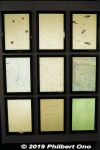
Mino washi postcardsApr 17, 2020
|
|
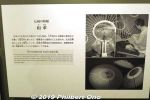
Washi umbrellasApr 17, 2020
|
|
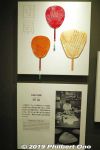
Washi uchiwa fansApr 17, 2020
|
|

Wash for various purposesApr 17, 2020
|
|

Paper for everyday useApr 17, 2020
|
|

The spread of paperApr 17, 2020
|
|

Mechanized papermakingApr 17, 2020
|
|
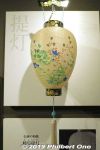
Washi paper lanternApr 17, 2020
|
|
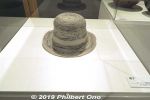
Washi hatApr 17, 2020
|
|

About washi yarn.Apr 17, 2020
|
|

Yarn and speaker cones made of Mino washi.Apr 17, 2020
|
|

Japanese styleApr 17, 2020
|
|
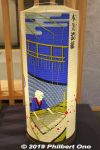
Apr 17, 2020
|
|
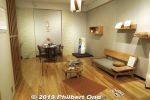
Apr 17, 2020
|
|
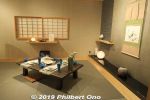
Apr 17, 2020
|
|
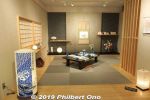
Exhibition room displaying washi used in practical and commercial products.Apr 17, 2020
|
|
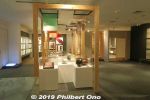
Also on the 2nd floor, Exhibition Room II displaying washi used at home and in practical and commercial products.Apr 17, 2020
|
|
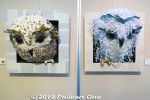
Apr 17, 2020
|
|
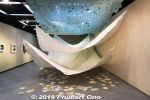
Mino Washi Museum, GifuApr 17, 2020
|
|
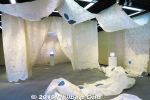
Mino Washi Museum, GifuApr 17, 2020
|
|
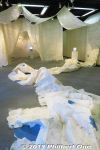
Apr 17, 2020
|
|
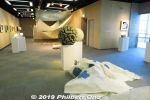
Apr 17, 2020
|
|
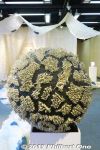
Mino Washi Museum, GifuApr 17, 2020
|
|
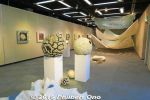
Exhibition room displaying washi art.Apr 17, 2020
|
|

On the 2nd floor, Exhibition Room I displays washi art.Apr 17, 2020
|
|
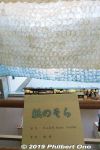
Washi artist is Akiyama Nobushige.Apr 17, 2020
|
|
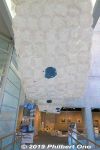
Apr 17, 2020
|
|
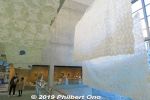
Apr 17, 2020
|
|
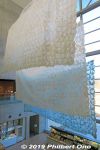
On the 1st floor below, there's a gift shop where you can buy Mino washi paper products. It's also where you can sign up for a washi papermaking lesson.Apr 17, 2020
|
|
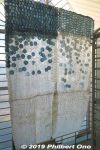
The museum has exhibition rooms and spaces to display washi artwork.Apr 17, 2020
|
|

Steps to make the washi fibers from mulberry plants, kozo, mitsumata, and ganpi. Bark is stripped and soaked in river water. Kozo is then boiled. Specks of impurities are picked off. The bark is mashed.Apr 17, 2020
|
|

Washi making lessons. You can make an A4 sheet, postcards, etc.Apr 17, 2020
|
|

My Mino washi paper.Apr 17, 2020
|
|
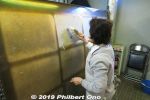
The paper is them placed on this water heater to further dry the paper. We could take home our washi after 30 min.Apr 17, 2020
|
|

Paper vaccuum dryer sucking water from the wet washi paper moving across the slit underneath. Vey neat.Apr 17, 2020
|
|
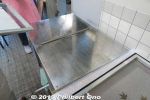
Paper vaccuum dryer. The slit sucks water from the paper.Apr 17, 2020
|
|
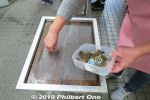
We could also put small leaves on the paper.Apr 17, 2020
|
|
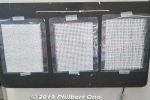
The streel grating makes these patterns on the paper. We could choose one of these.Apr 17, 2020
|
|
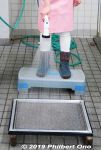
We could put a steel grating having a template design over the washi sheet and sprinkle water over it to impress the grating template on the the paper.Apr 17, 2020
|
|
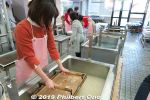
We tried making a washi sheet.Apr 17, 2020
|
|
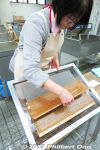
Transferring the paper sheet.Apr 17, 2020
|
|
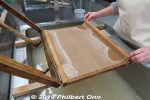
This is what happens when you don't do it right. Uneven paper.Apr 17, 2020
|
|

Dump the mold into the vat and swish it left/right and forward/back evenly.Apr 17, 2020
|
|
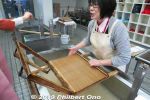
Apr 17, 2020
|
|
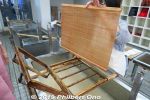
Our washi instructor taught us how to do it using a wooden mold (keta 桁) supporting a screen.Apr 17, 2020
|
|
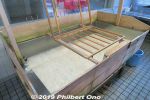
A large vat (sukifune) filled with washi fibers floating evenly in the water.Apr 17, 2020
|
|
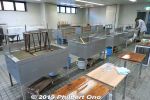
Basement floor has this paper-making workshop where you can try making your own washi paper. It can be a single sheet 33x45cm), 6 postcards, or diploma. Takes less than an hour. Fees are ¥500 to ¥800. ワークショップ - 紙すきの体験Apr 17, 2020
|
|

Entrance to Mino Washi Museum (Mino Washi no Sato Kaikan). It was renovated in April 2017, so it looks new. There are three floors, including a basement floor.Apr 17, 2020
|
|
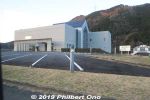
Mino Washi Museum has exhibits about washi history, washi making, and washi paper art. It also offers washi paper-making lessons. Make your own washi postcards, etc. Anybody can do it. Open 9 a.m.–5 p.m., closed Tue. Admission ¥500 (¥250 for elementary school and jr. high school). From Mino-shi Station, take a taxi. The museum is far from the train station because it needs to be near a clean river. Parking available.Apr 17, 2020
|
|
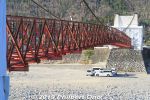
Mino Bridge over Nagara River. (Under renovation.) 美濃橋Apr 17, 2020
|
|
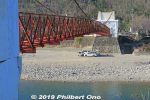
Mino Bridge over Nagara River. It has a wooden floor. It's being renovated so we couldn't cross it in Jan. 2019. Jumping off this bridge into the river can be fatal. 美濃橋Apr 17, 2020
|
|
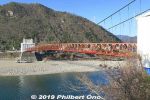
Built in 1916, Mino Bridge is Japan's oldest surviving modern bridge and a National Important Cultural Property. It's now a pedestrian and bicycle bridge 113 meters long. 美濃橋Apr 17, 2020
|
|
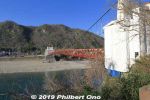
Mino Bridge over Nagara River. Until 1965, vehicles used to cross the bridge. 美濃橋Apr 17, 2020
|
|
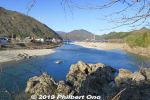
Nagara River in Mino, Gifu.Apr 17, 2020
|
|
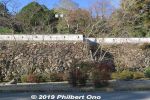
Ogurayama Castle on a hilltop. Kanamori Nagachika (1524–1608) was a daimyo who developed the Mino castle town. 小倉山城跡Apr 17, 2020
|
|

Ogurayama Castle on a hilltop. Originally built by Kanamori Nagachika (1524–1608) 金森長近 in 1605 as a retirement residence. Now part of Ogura Park in Mino, Gifu Prefecture. 小倉山城跡The turret is a reconstruction.Apr 17, 2020
|
|
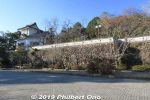
Also visited Ogurayama Castle on a hilltop nearby. 小倉山城跡Apr 17, 2020
|
|

Mino Tourist information office has tourist pamphlets. 美濃市観光協会「番屋」Apr 17, 2020
|
|
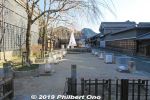
Apr 17, 2020
|
|

Matsuhisa Eisuke paper storeApr 17, 2020
|
|
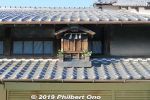
Little external shrine, Akiba-sama. 秋葉様Apr 17, 2020
|
|
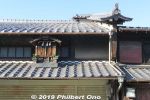
Apr 17, 2020
|
|
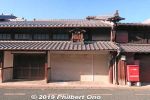
Apr 17, 2020
|
|

Sign about Sugihara Chiune who was born in 1900 at Kyosenji Temple in Mino, Gifu near here. 杉原 千畝Apr 17, 2020
|
|

Sign about Sugihara Chiune who was born in Mino, Gifu near here. Sugihara is famous as the Japanese diplomat in Lithuania who gave transit visas to Jews fleeing the Holocast during World War II.Apr 17, 2020
|
|
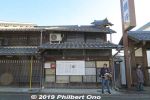
Juroku BankApr 17, 2020
|
|
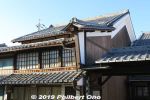
Udatsu roof firewall in Mino, Gifu.Apr 17, 2020
|
|

Markers commemorating a visit by the Emperor and Empress and Crown Prince.Apr 17, 2020
|
|
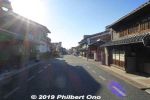
Apr 17, 2020
|
|
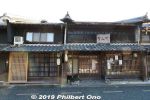
TomiyaApr 17, 2020
|
|

About Former Imai Residence. 旧今井家Apr 17, 2020
|
|
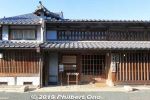
Former Imai Residence used as the Mino History Museum. Free admission.Apr 17, 2020
|
|
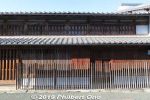
Former Imai Residence 旧今井家Apr 17, 2020
|
|
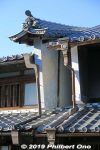
Yoshida Kobo udatsu roof firewall.Apr 17, 2020
|
|

Yoshida KoboApr 17, 2020
|
|
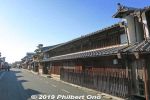
Yoshida KoboApr 17, 2020
|
|
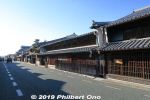
Udatsu roofs in Mino, Gifu Prefecture.Apr 17, 2020
|
|
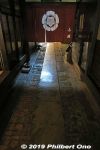
Kosaka Family ResidenceApr 17, 2020
|
|
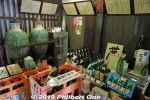
Inside Kosaka Family Residence is a sake shop.Apr 17, 2020
|
|

About Kosaka Family Residence. 小坂家住宅Apr 17, 2020
|
|
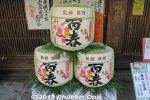
Apr 17, 2020
|
|

About Suzuki Kohei residence.Apr 17, 2020
|
|

Kosaka Family Residence of a sake brewing family. National Important Cultural Property. 小坂家住宅Apr 17, 2020
|
|
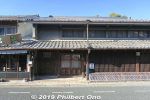
Former Honjin lodge for VIPs. Suzuki Kohei residence.Apr 17, 2020
|
|

Inside Hirata Family residenceApr 17, 2020
|
|

Signboards explain in English the most significant homes. This is the Hirata Family residence.Apr 17, 2020
|
|
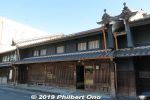
Hirata Family residence 平田家Apr 17, 2020
|
|
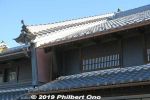
Apr 17, 2020
|
|

Mino basically developed as a merchant's town up to the late 19th century. Udatsu roof firewall in Mino, Gifu.Apr 17, 2020
|
|
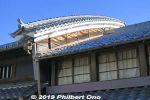
Mino in Gifu has a traditional townscape of "udatsu" homes. Udatsu is a decorative firewall on the side of the home's roof. Townscape is a rectangular area of residential streets lined with traditional homes. A few are open to the public.Near Minoshi Station on the Nagaragawa Railway. This area is a National Important Traditional Townscape Preservation District (重要伝統的建造物群保存地区).Apr 17, 2020
|
|
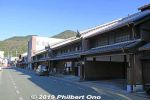
Mino and this townscape was part of the Mino castle town developed by Daimyo Kanamori Nagachika (1524–1608) who lived in nearby Ogurayama Castle. You can park your car somewhere and walk around the area.National Important Traditional Townscape Preservation District.Apr 17, 2020
|
|

Pink Lady, Candies, Iwasaki Hiromi, etc.Apr 17, 2020
|
|
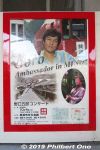
Pop singer Noguchi Goro posters.Apr 17, 2020
|
|
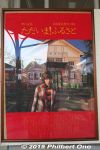
Pop singer Noguchi Goro posters. He was a super popular idol singer in the 1970s in Japan along with Go Hiromi and Saijo Hideki.Apr 17, 2020
|
|
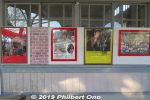
Pop singer Noguchi Goro posters.Apr 17, 2020
|
|
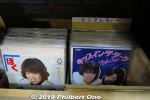
Records also on sale.Apr 17, 2020
|
|

1960s J-pop singers.Apr 17, 2020
|
|

45 rpm single records by J-pop idol singers from the 1970s.Apr 17, 2020
|
|

Inside the Mino Station office is now a shop selling old J-pop records from the 1960s and 1970s. Huge collection.Apr 17, 2020
|
|

Inside the Mino Station office is now a shop selling old J-pop records from the 1960s and 1970s.Apr 17, 2020
|
|
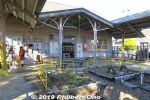
Mino Station as seen from the platform.Apr 17, 2020
|
|

Driver's seat in モ601.Apr 17, 2020
|
|
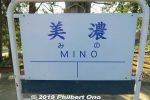
Old train station sign.Apr 17, 2020
|
|

Inside モ601 train.Apr 17, 2020
|
|
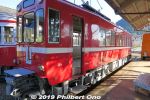
モ601Apr 17, 2020
|
|
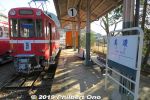
Mino Station, Gifu. モ601Apr 17, 2020
|
|
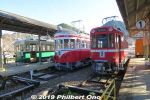
Mino Station, Gifu, with three retired trains on display.Apr 17, 2020
|
|
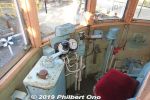
Driver's seat in モ512.Apr 17, 2020
|
|
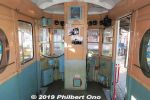
Driver's cab in モ512.Apr 17, 2020
|
|
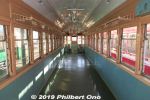
モ512Apr 17, 2020
|
|
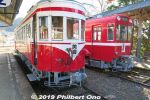
Mo 512 and Mo 601 trains.モ512およびモ601Apr 17, 2020
|
|
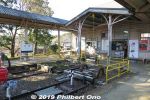
Apr 17, 2020
|
|
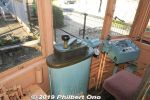
Apr 17, 2020
|
|
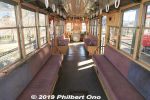
Apr 17, 2020
|
|
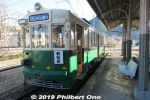
Apr 17, 2020
|
|
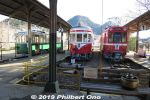
Three old trains are on display. You can go inside each one. Apr 17, 2020
|
|
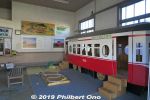
Play area for kids.Apr 17, 2020
|
|

Pop singer Noguchi Goro is from Mino, Gifu.Apr 17, 2020
|
|

Mino Station waiting room.Apr 17, 2020
|
|

Inside Mino Station in Mino, Gifu Prefecture.Apr 17, 2020
|
|

Mino Station ticket office.Apr 17, 2020
|
|

Monument by Mino city explaining the history of Mino Station. This station has been preserved as a testament to the hard work by forebearers for this old train line.Apr 17, 2020
|
|
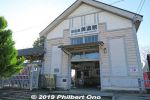
Mino Station on the old Meitetsu Mino-cho Line in Gifu Prefecture closed in April 1999 and has been preserved as a Registered Tangible Cultural Property (登録有形文化財) since 2005. The train line was abolished in March 1999. However, the charming station building still stands and open to the public, complete with a few trains on display. Mino Station first opened here in Oct. 1923. (Not to be confused with other Mino Stations in Japan.) Short walk from Minoshi Station (美濃市駅) on the Nagaragawa Railway. 名鉄美濃町線Apr 17, 2020
|
|

Hirakawa Gate at the Imperial Palace.Apr 15, 2020
|
|
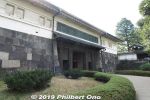
Hirakawa Gate at the Imperial Palace.Apr 15, 2020
|
|
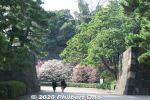
Apr 15, 2020
|
|
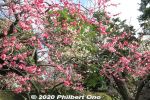
Apr 15, 2020
|
|
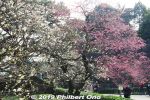
Plum blossoms at the Imperial Palace.Apr 15, 2020
|
|
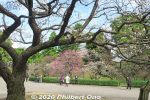
Apr 15, 2020
|
|
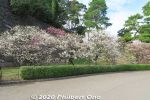
Apr 15, 2020
|
|
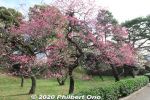
Plum plossoms near Hirakawa Gate.Apr 15, 2020
|
|
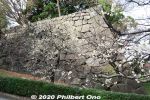
Apr 15, 2020
|
|
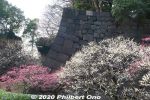
Apr 15, 2020
|
|
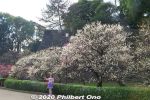
Apr 15, 2020
|
|
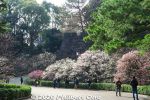
Apr 15, 2020
|
|
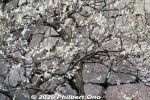
Apr 15, 2020
|
|
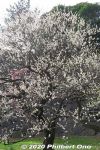
Apr 15, 2020
|
|
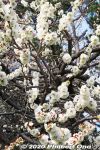
Apr 15, 2020
|
|

Blizzard of white plum blossoms at the Imperial Palace.Apr 15, 2020
|
|
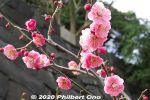
Apr 15, 2020
|
|

Apr 15, 2020
|
|
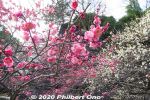
Apr 15, 2020
|
|
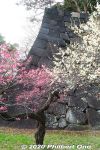
Plum blossoms at the Imperial Palace.Apr 15, 2020
|
|
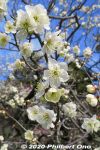
Plum blossoms at the Imperial Palace.Apr 15, 2020
|
|
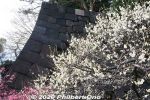
Plum blossoms at the Imperial Palace.Apr 15, 2020
|
|
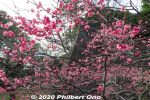
Apr 15, 2020
|
|
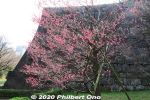
The Imperial Palace also has some plum blossoms near Hirakawa Gate. Blooming in Feb.Apr 15, 2020
|
|

High-class inn named "Asaba"Apr 13, 2020
|
|

Apr 13, 2020
|
|

Drinkable hot spring water in Tokko-no-Yu Park.Apr 13, 2020
|
|

About the Child Daishi statue. 湯掛け稚児大師像Apr 13, 2020
|
|
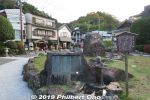
Tokko-no-Yu Park has this child Daishi statue on which you can pour hot spring water andmake a wish. 湯掛け稚児大師像Apr 13, 2020
|
|

Apr 13, 2020
|
|

Tokko-no-Yu Park has this foot bath named "Suginoyu" overlooking the river. 杉の湯Apr 13, 2020
|
|

Tokko-no-Yu Park 独鈷の湯公園Apr 13, 2020
|
|

View of Shuzenji from Hakoyu Spa lookout tower.Apr 13, 2020
|
|

View from Hakoyu Spa lookout tower.Apr 13, 2020
|
|

Hakoyu Spa lookout tower. 筥湯Apr 13, 2020
|
|

Hakoyu Spa lookout tower. 筥湯Apr 13, 2020
|
|

Hakoyu Spa lookout tower. 筥湯Apr 13, 2020
|
|
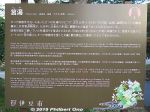
About Hakoyu Spa. This site is where Shogun Minamoto Yoriie bathed during the Kamakura Period. 筥湯Apr 13, 2020
|
|

Hakoyu Spa is a public hot spring bath. The bath house is made of cypress wood. Fee is ¥350. 筥湯Apr 13, 2020
|
|
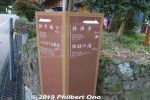
Apr 13, 2020
|
|

Togetsu Bridge 渡月橋Apr 13, 2020
|
|

Togetsu Bridge 渡月橋Apr 13, 2020
|
|
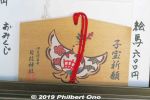
Hie Shrine ema tablet.Apr 13, 2020
|
|

Shuzenji Temple's wedded trees.Apr 13, 2020
|
|

Shuzenji Temple's wedded trees (two tree trunks growing from the same roots). There's also a child tree. Women who want to get married or have children come to pray here.子宝の杉Apr 13, 2020
|
|
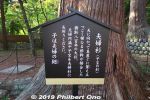
About Shuzenji Temple's wedded trees, about 800 years old.Apr 13, 2020
|
|

Hie Jinja Shrine in Shuzenji, Shizuoka. 日枝神社拝殿Apr 13, 2020
|
|

Worshippers' wishes. Tamayori and Ninuriya good luck charms tied on this lattice with people's wishes written.『玉依の花』と『丹塗り矢』Apr 13, 2020
|
|

Hie Jinja Shrine legend.Apr 13, 2020
|
|
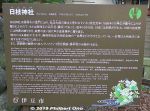
About Hie Jinja Shrine. 日枝神社https://www.hiejinja.net/english/index.htmlApr 13, 2020
|
|

Hie Jinja Shrine is next to Shuzenji Temple in Izu, Shizuoka. 日枝神社Apr 13, 2020
|
|

Bell tower at Shuzenji Temple. 修禅寺 鐘楼堂Apr 13, 2020
|
|

Apr 13, 2020
|
|

Shuzenji Temple's Hondo main hall. 修禅寺Apr 13, 2020
|
|

Shuzenji Temple was founded by Kobo Daishi (Kukai) in 807 was originally a Shingon Buddhist temple. Izu, Shizuoka Prefecture. 修禅寺https://shuzenji-temple.com/english.htmlApr 13, 2020
|
|

Shuzenji Temple is a Soto-shu Zen Buddhist temple. 曹洞宗 修禅寺Apr 13, 2020
|
|

Shuzenji Temple's Wash basin has hot spring water. 水屋Apr 13, 2020
|
|

Wash basin 水屋 修禅寺Apr 13, 2020
|
|

Shuzenji Temple's Sanmon Gate. 修禅寺 山門Apr 13, 2020
|
|

Kokei Bridge 虎渓橋 Apr 13, 2020
|
|

Apr 13, 2020
|
|

Katsura Bridge in Shuzenji Onsen decorated with chrysanthemum.Apr 13, 2020
|
|

Tokko-no-Yu spring in the middle of the river, Shuzenji's hot spring water source. 独鈷の湯Apr 13, 2020
|
|

Tokko-no-Yu spring in the middle of the river, Shuzenji's symbol and hot spring water source founded by Kobo Daishi. I was told that people are not allowed to dip into the water here, but tourists are using it as a foot bath.独鈷の湯Apr 13, 2020
|
|

Sculpture of the tokko Buddhist tool Kobo Daishi used to dig for Shuzenji's hot spring source.Apr 13, 2020
|
|

Apr 13, 2020
|
|
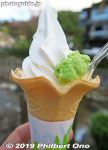
Soft-serve ice cream cone with freshly-grated wasabi. Very good. Shuzenji Onsen, Izu, Shizuoka Prefecture. 生わさびソフトクリームApr 13, 2020
|
|

Stand for soft-serve with freshly-grated wasabi.Apr 13, 2020
|
|

Soft-serve with freshly-grated wasabiApr 13, 2020
|
|

Roadside foot bath.Apr 13, 2020
|
|

Apr 13, 2020
|
|

Katsura RiverApr 13, 2020
|
|

Apr 13, 2020
|
|

Famous ryokan inn where famous novelists stayed and wrote novels.Apr 13, 2020
|
|

Apr 13, 2020
|
|

Katsura Bridge and Katsura River in Shuzenji Onsen.Apr 13, 2020
|
|

Katsura BridgeApr 13, 2020
|
|

Katsura BridgeApr 13, 2020
|
|

After the Bamboo forest is Katsura Bridge in Shuzenji Onsen. Cross this bridge to make your wish come true, especially if you want children.Apr 13, 2020
|
|

Looking up at the sky and bamboo tree tops from the bamboo bed. 竹林の小径Apr 13, 2020
|
|

Bamboo forest in Shuzenji Spa, Shizuoka Prefecture. The bamboo is also lit up in the evening. 竹林の小径Apr 13, 2020
|
|

Bamboo bed to lie down and look up at the bamboo tree tops.Apr 13, 2020
|
|

Bamboo forest in Shuzenji Spa, Shizuoka Prefecture. 竹林の小径Apr 13, 2020
|
|

Bamboo forest in Shuzenji Spa, Shizuoka Prefecture. 竹林の小径Apr 13, 2020
|
|

About Kaede Bridge.Apr 13, 2020
|
|

Crossing Kaede Bridge over Katsura River.Apr 13, 2020
|
|

View from Kaede Bridge.Apr 13, 2020
|
|

Shuzenji Onsen is a compact hot spring town with pleasant walking paths, foot baths, and natural scenery. It's 2.5 km from Shuzenji Station which has a tourist information office.From Shuzenji Station, you can rent a bicycle and ride to Shuzenji Onsen for a day trip. We started our walk from near Yasuragi Bridge in Nov. 滝下橋Apr 13, 2020
|
|

Gallery Shuzenji Kairo along the river.Apr 13, 2020
|
|

Dinner at Seizan Yamato included deer meat.Apr 13, 2020
|
|

Dinner at Seizan Yamato, a hot spring ryokan in Ito, Shizuoka.Apr 13, 2020
|
|

Dinner at Seizan Yamato, a hot spring ryokan in Ito, Shizuoka.Apr 13, 2020
|
|
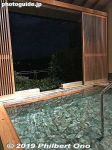
Seizan Yamato Ryokan hot spring bath.Apr 13, 2020
|
|
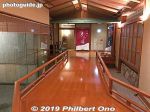
Seizan Yamato, a hot spring ryokan in Ito, Shizuoka. Way to the hot spring baths.Apr 13, 2020
|
|

Seizan Yamato, a hot spring ryokan in Ito, Shizuoka. This is the lobby.Apr 13, 2020
|
|
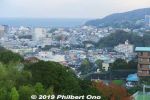
Ito, Shizuoka on the Izu Peninsula.Apr 13, 2020
|
|

Apr 13, 2020
|
|

Anjin Summit poster.Apr 13, 2020
|
|

Apr 13, 2020
|
|

Apr 13, 2020
|
|

Ito Onsen manhole, Shizuoka.Apr 13, 2020
|
|

Apr 13, 2020
|
|

Apr 13, 2020
|
|

One of the Seven Gods of Good Fortune in Ito Onsen.Apr 13, 2020
|
|

One of the Seven Gods of Good Fortune in Ito Onsen.Apr 13, 2020
|
|

One of the Seven Gods of Good Fortune in Ito Onsen.Apr 13, 2020
|
|

One of the Seven Gods of Good Fortune in Ito Onsen.Apr 13, 2020
|
|

Seven Gods of Good Fortune in Ito Onsen.Apr 13, 2020
|
|

Apr 13, 2020
|
|

Apr 13, 2020
|
|

Apr 13, 2020
|
|

Apr 13, 2020
|
|

In front of Ito Station are narrow streets with a mishmash of shops.Apr 13, 2020
|
|

In front of JR Ito Station are some shops.Apr 13, 2020
|
|
| 71466 files on 284 page(s) |
 |
 |
33 |  |
 |
|